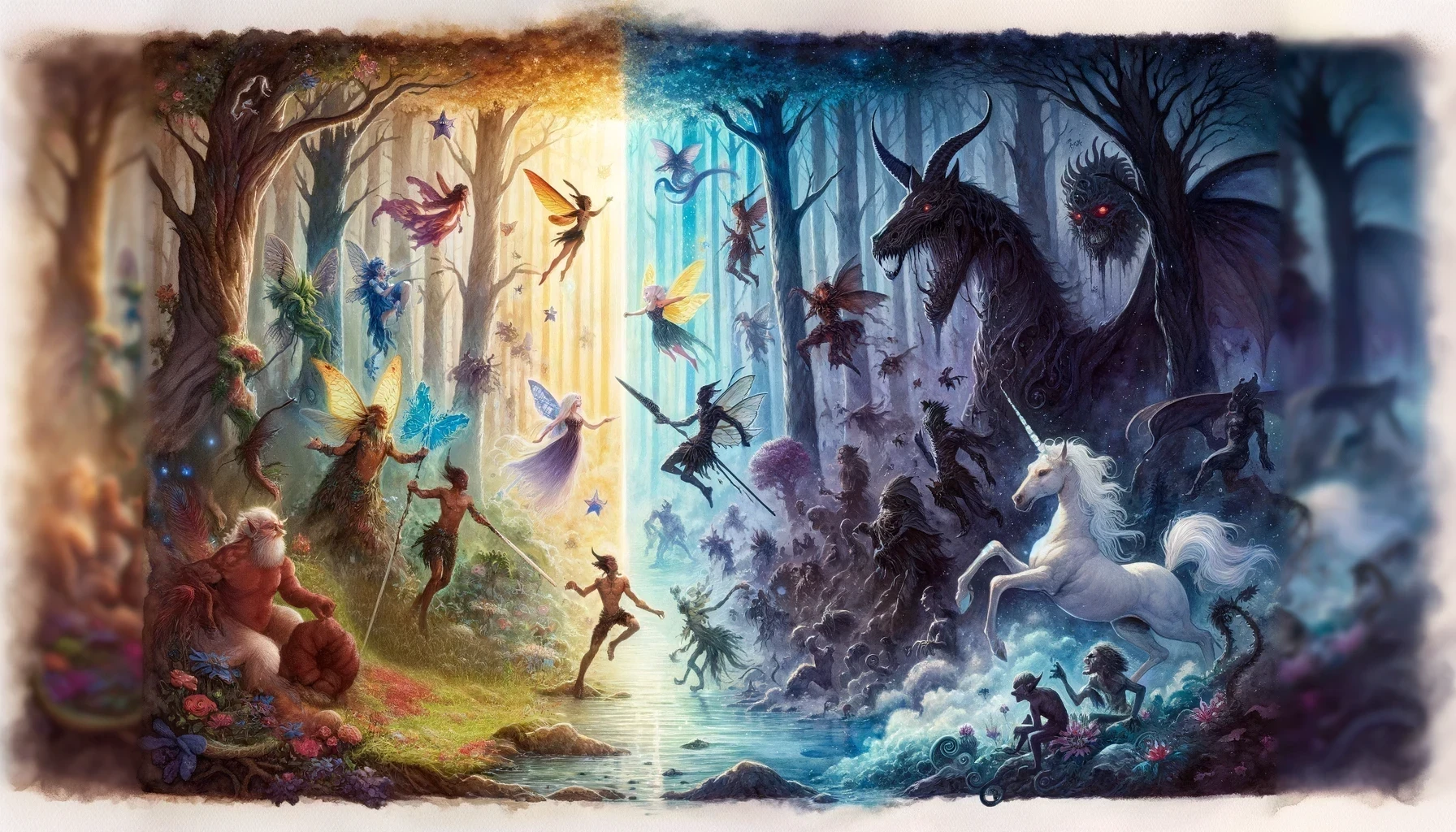top of page

The Clockwork Conspiracy
A busy steampunk cityscape scene



The Clockwork Conspiracy
A busy steampunk cityscape scene
1/4
D&D Alignment
-
Alignment: A character's moral and ethical compass. Alignment defines how a character views the world and their place within it.
-
Lawful Good: An alignment representing characters who believe in honour, order, rules, and goodness. They strive to do what is right and are usually very reliable.
-
Neutral Good: Characters with this alignment do the best they can to help others according to their needs. They are devoted to doing good without being bound by rules and order.
-
Chaotic Good: This alignment represents free spirits who still have a good heart. They value freedom and individuality and are good at heart, but they don't feel beholden to laws and order.
-
Lawful Neutral: Characters who are lawful neutral prioritize order, system, and organization, whether the outcome is good or evil is secondary to them.
-
True Neutral: Characters of this alignment believe in the ultimate balance of forces, and they refuse to feel strongly one way or the other about Good vs. Evil or Law vs. Chaos.
-
Chaotic Neutral: This alignment represents characters who follow their whims. They are individualists above all and value their own liberty but don't strive for the good or evil.
-
Lawful Evil: Characters with this alignment take what they want within the limits of their code of conduct without regard for whom it hurts. They care about order but not that order is used for good.
-
Neutral Evil: Characters with a neutral evil alignment are primarily concerned with themselves and their own advancement. They have no particular objection to order and laws but neither do they feel compelled to follow them.
-
Chaotic Evil: These characters act with arbitrary violence and are motivated by their greed, hatred, or desire for power. They don't respect rules, other people's lives, or anything but their own desires.
-
Moral Axis: This refers to the Good-Neutral-Evil part of the alignment system. It helps define a character's ethical stance.
-
Ethical Axis: This refers to the Lawful-Neutral-Chaotic part of the alignment system. It helps define a character's personal beliefs in relation to order and chaos.
-
Alignment Change: This term refers to a character's shift from one alignment to another due to their actions, decisions, or magical effects.
-
Alignment System: The system of categorizing the moral and ethical perspectives of player characters, non-player characters, and creatures.
-
Paladin’s Oath: Paladins in D&D swear a sacred oath that aligns with certain principles. Violation of these oaths can affect their alignment and abilities.
-
Alignment Languages: In earlier editions of D&D, characters could speak a language specific to their alignment. This concept has been largely phased out in newer editions.
These are some of the key terms related to Alignment in D&D, but remember that alignment is a tool for understanding your character's motivations, not a straitjacket restricting their actions.
Using Alignment in Roleplaying
Understanding and employing the Alignment system in Dungeons & Dragons can add depth and consistency to your role-playing game.
As a Dungeon Master (DM), you can leverage this system to breathe life into your Non-Player Characters (NPCs), making them more than just props or adversaries, but living beings with motivations and ideologies.
Alignments represent a creature or character's moral and ethical compass, their worldview, and their fundamental beliefs. They fall along two axes: the Moral Axis (Good, Neutral, Evil) and the Ethical Axis (Lawful, Neutral, Chaotic). Together, they create a matrix of nine alignments, from Lawful Good, through True Neutral, to Chaotic Evil.
When creating NPCs, consider their alignment as a starting point. A Lawful Good city guard, for instance, strives to uphold the law and believes in doing what is right.
They are likely to be helpful, reliable, and dedicated to maintaining order. Conversely, a Chaotic Evil bandit values their own freedom and power, likely to resort to violence and deception to achieve their goals.
Alignment can also help you understand and portray an NPC's reaction to the player characters' actions. A Neutral Good innkeeper may provide shelter to a group of adventurers without expecting anything more than the agreed-upon price, while a Neutral Evil spy might aid the group only if there's something beneficial for them in return.
However, remember that alignment isn't a straitjacket. People are complex, and so too should be your characters. A Lawful Evil character can still care deeply for their family, and a Chaotic Good character can have a habit that might be seen as selfish. Alignment is a guide, not an absolute rule.
The Alignment system can also be a tool for dynamic storytelling. Alignment Change, for instance, can be a powerful narrative device. Perhaps a Lawful Good NPC falls from grace due to a series of unfortunate decisions, drifting towards Lawful Evil, or a Chaotic Evil adversary has a change of heart and starts their path towards redemption.
Even entities like Paladins, who follow a strict Paladin's Oath that often dictates a Lawful Good alignment, can experience internal conflict if they face situations where the "lawful" and the "good" actions aren't the same. Such dilemmas can create compelling narrative tension.
However, avoid overusing Alignment Languages from earlier D&D editions. These can restrict communication and can feel contrived, detracting from the immersion and realism of your game world.
In conclusion, alignments can be a vital tool for DMs to create believable NPCs and engaging narratives. They can provide consistency to character behaviour, serve as a reference for decision-making, and offer avenues for character growth and transformation. But they should always serve the story and the fun of the game, not the other way around.
bottom of page




